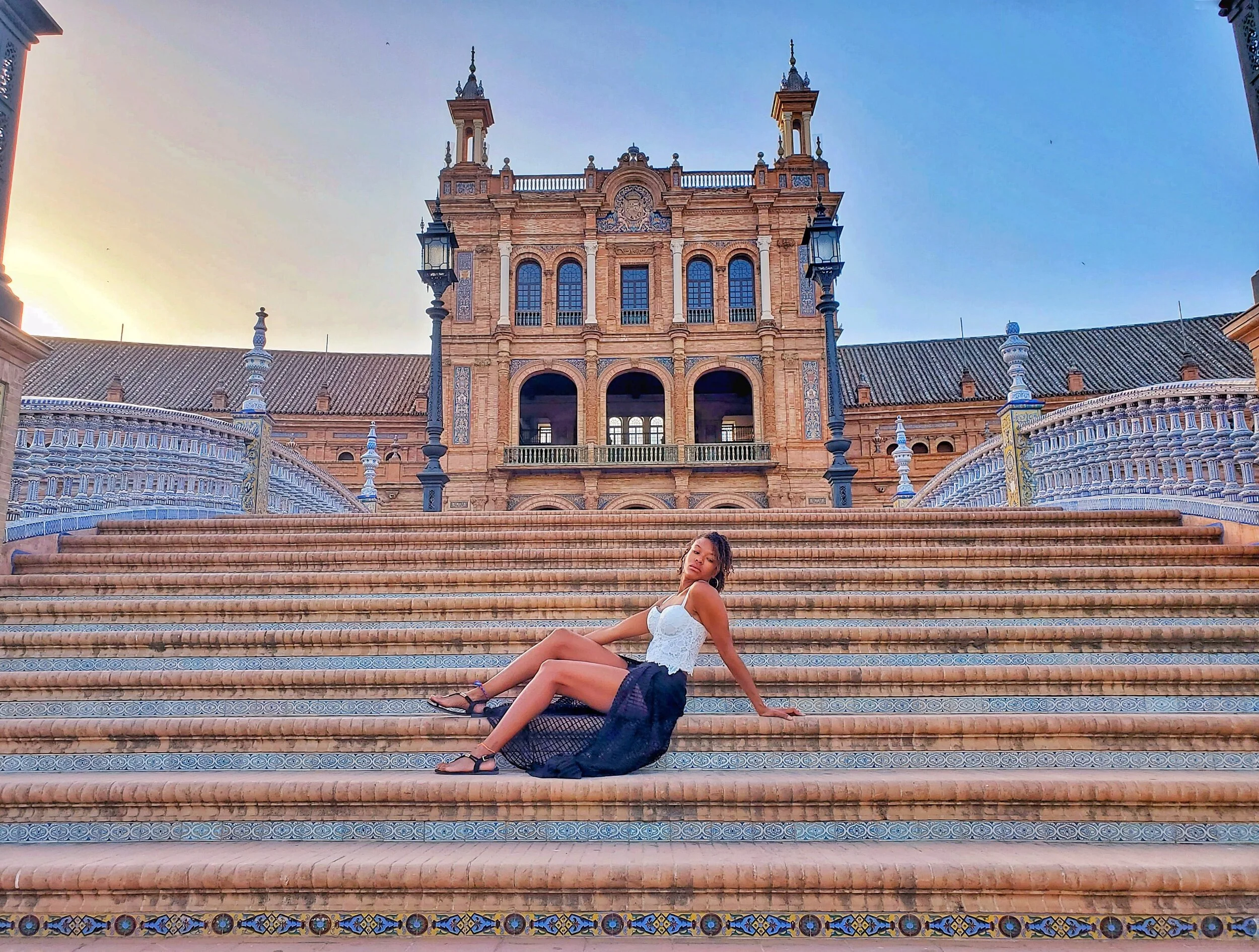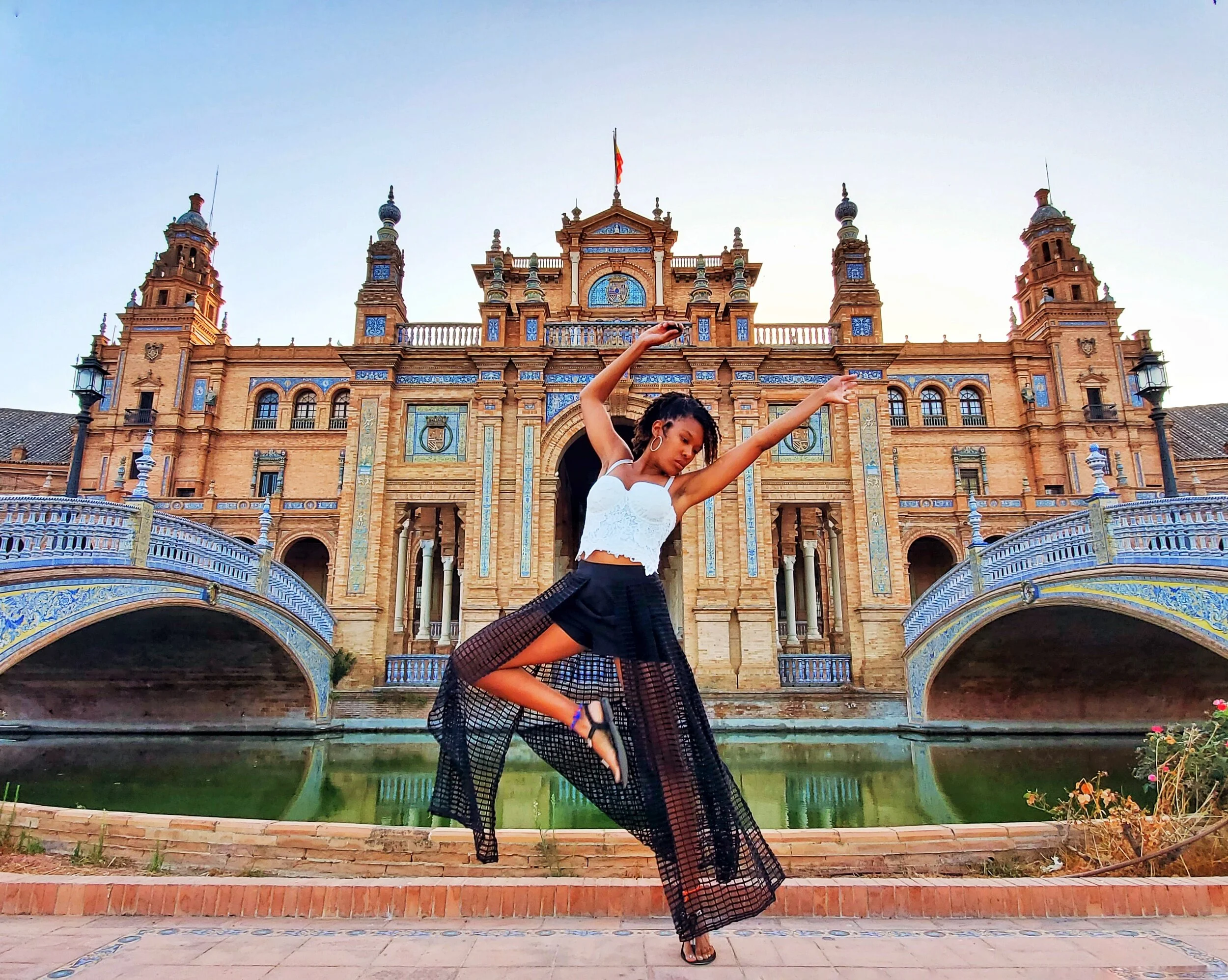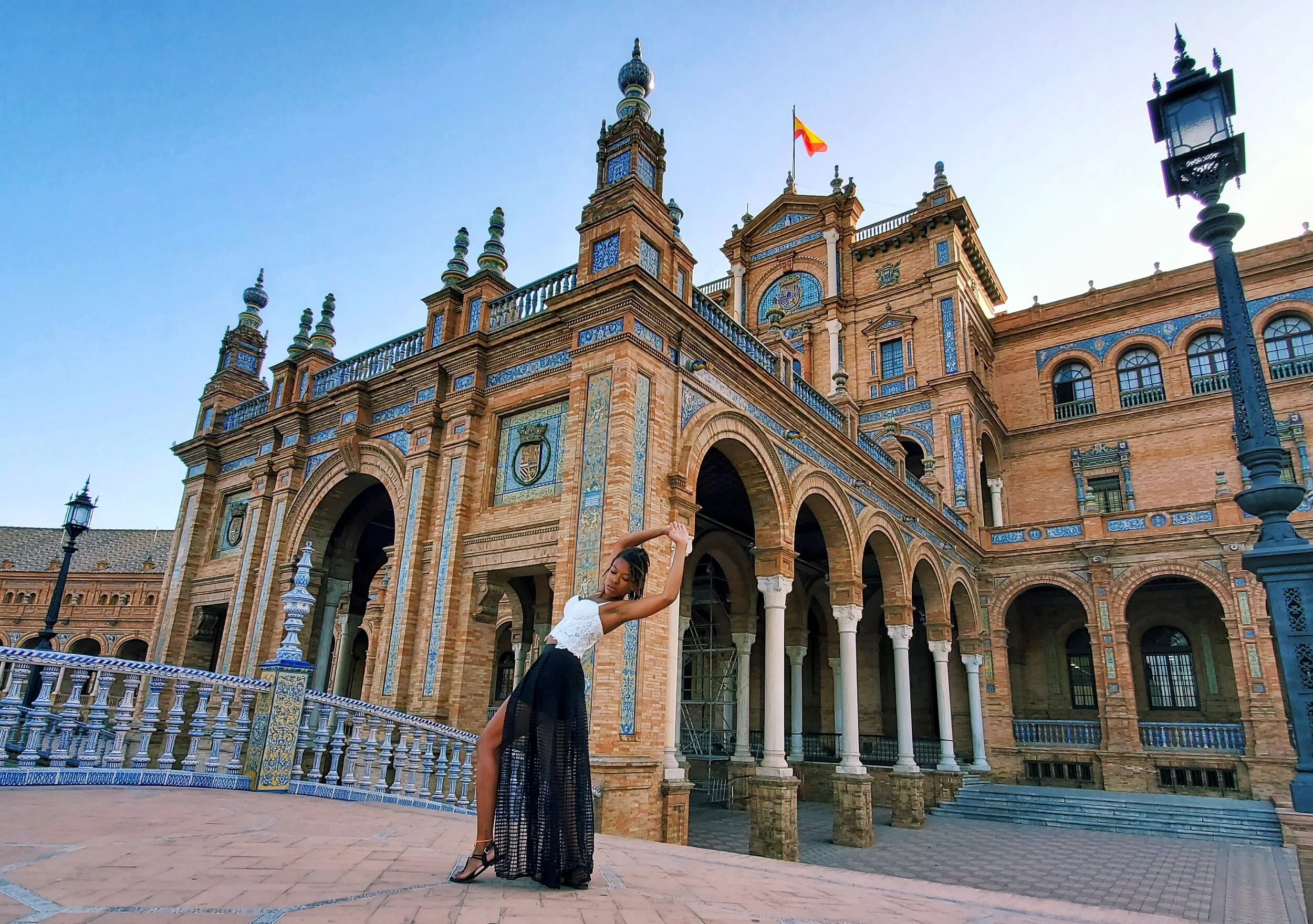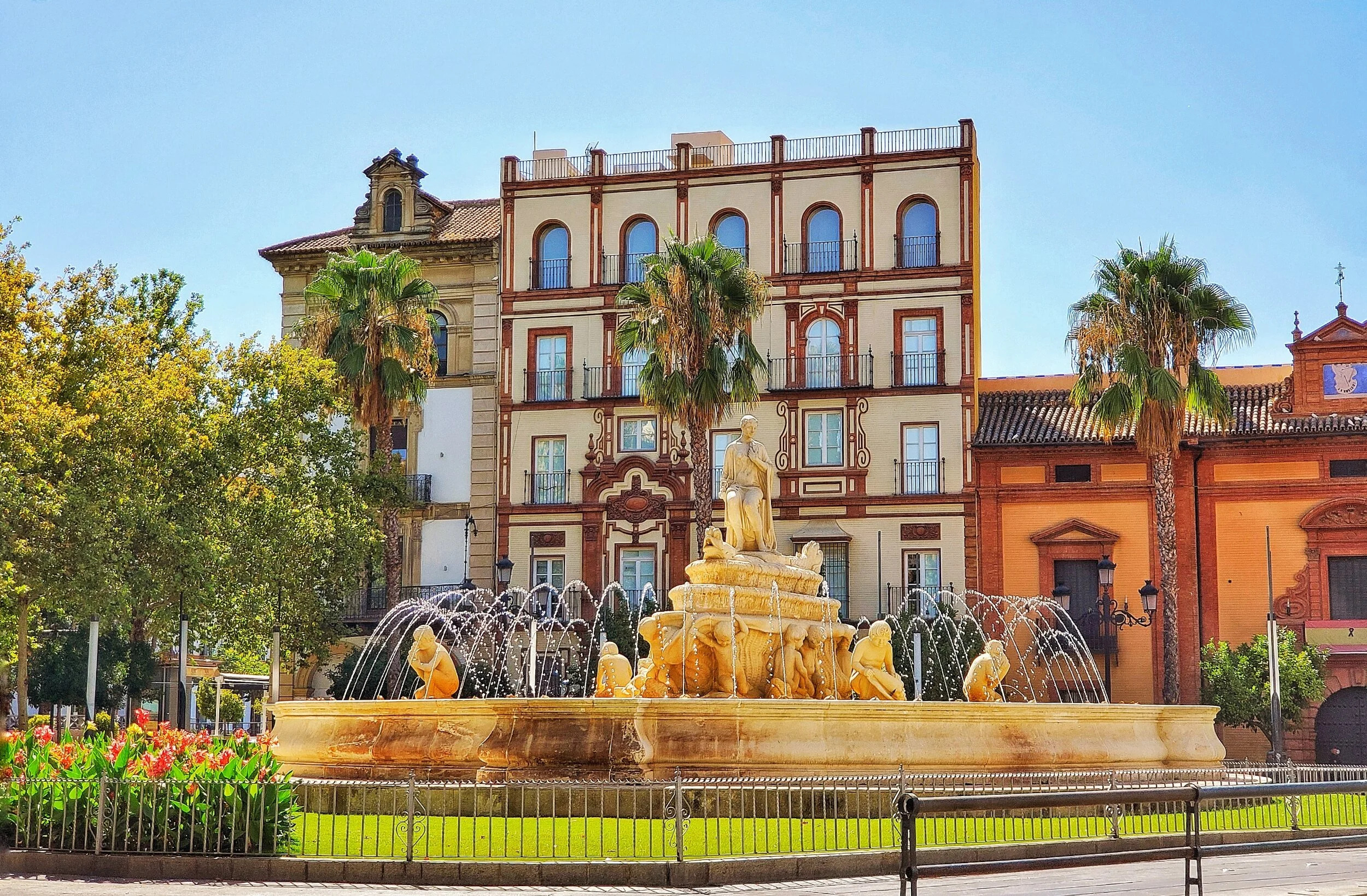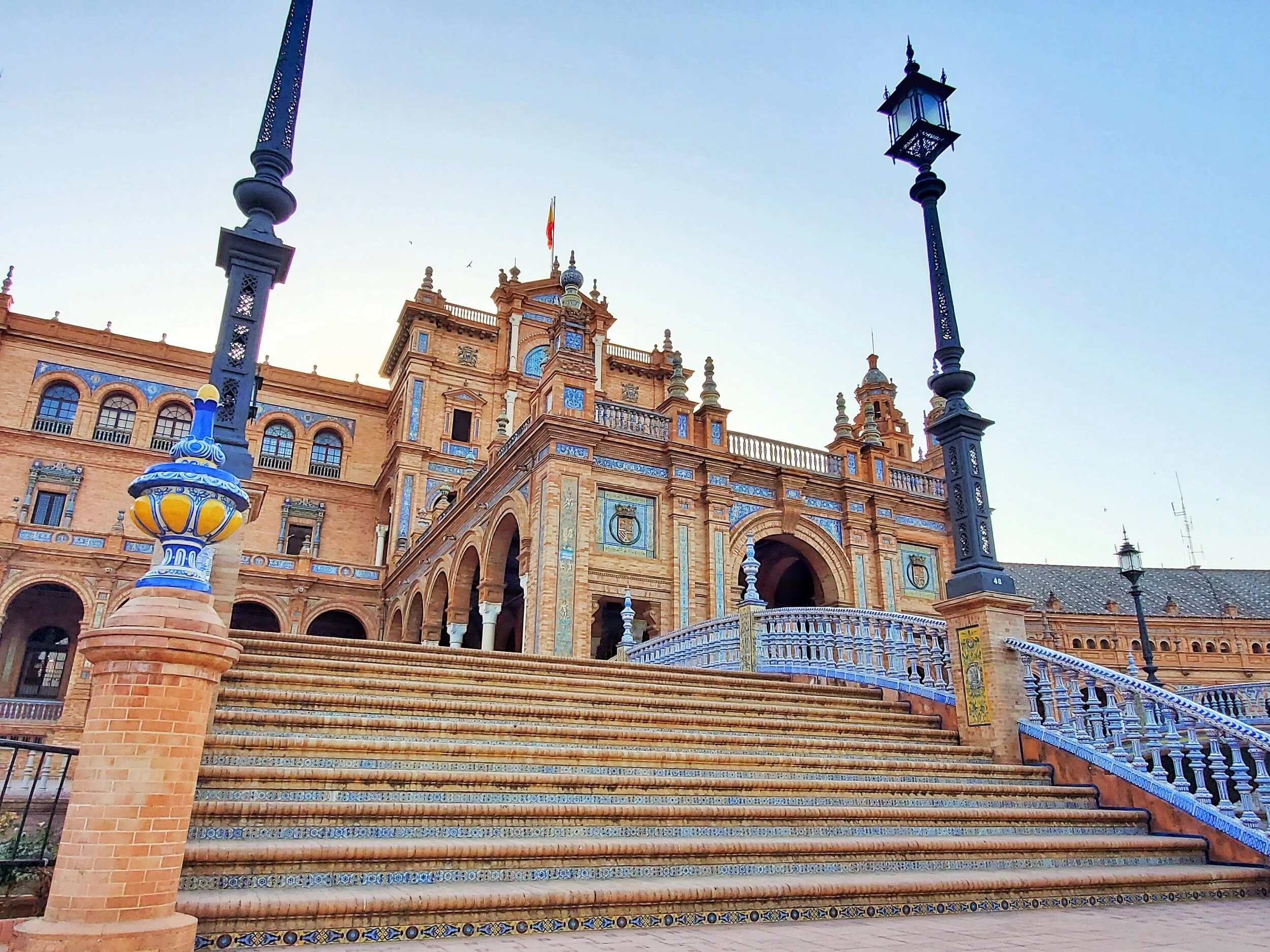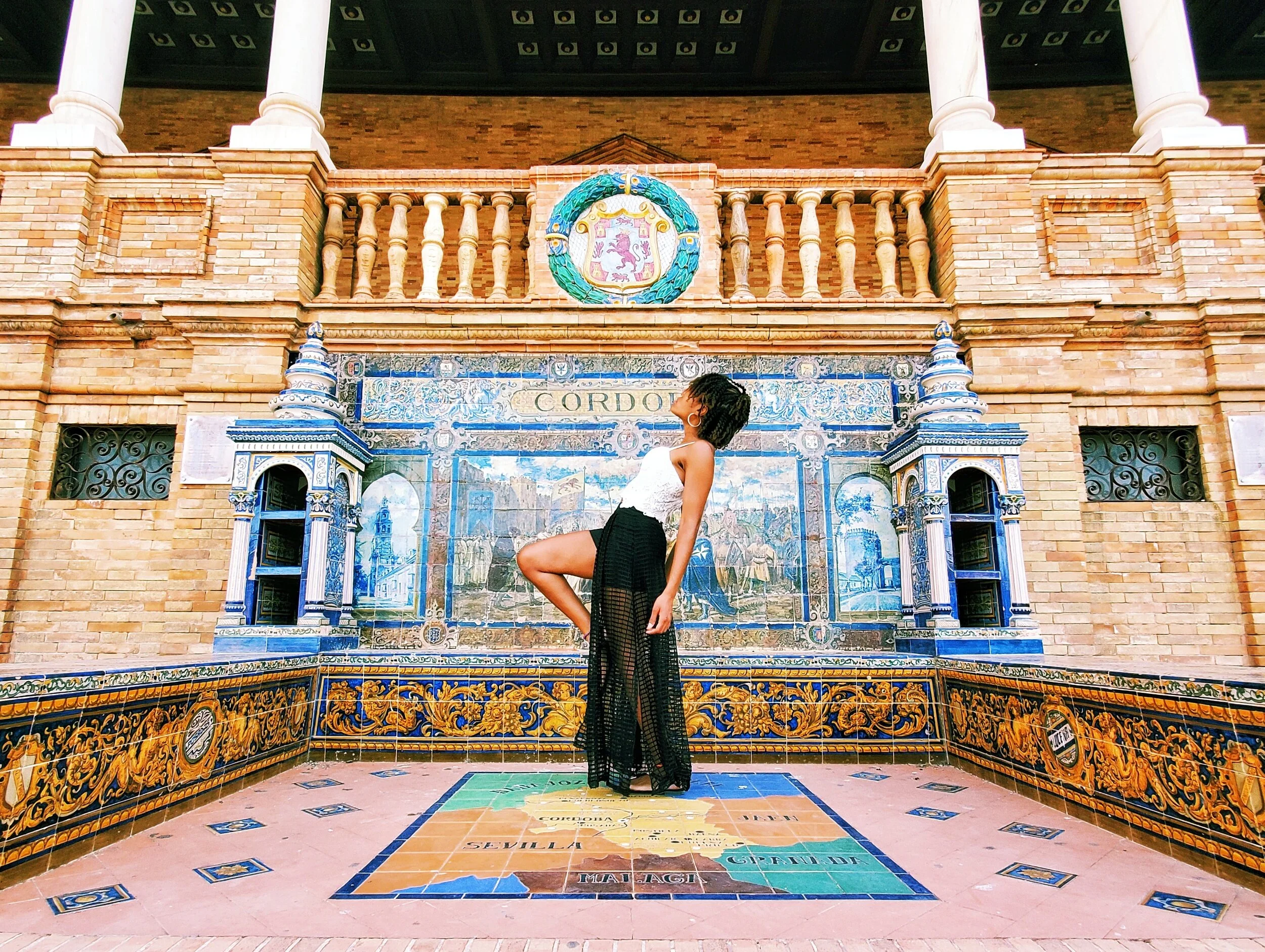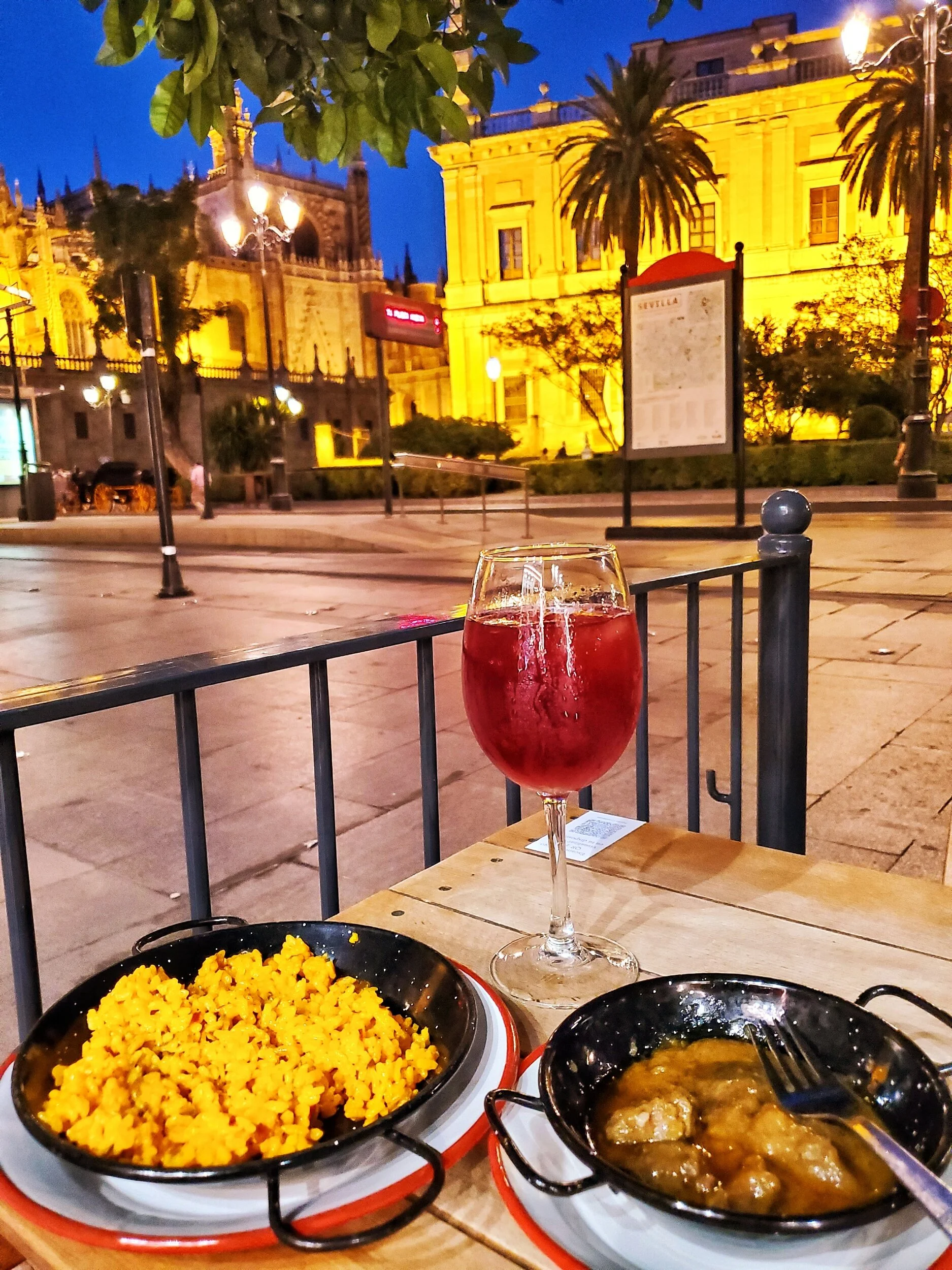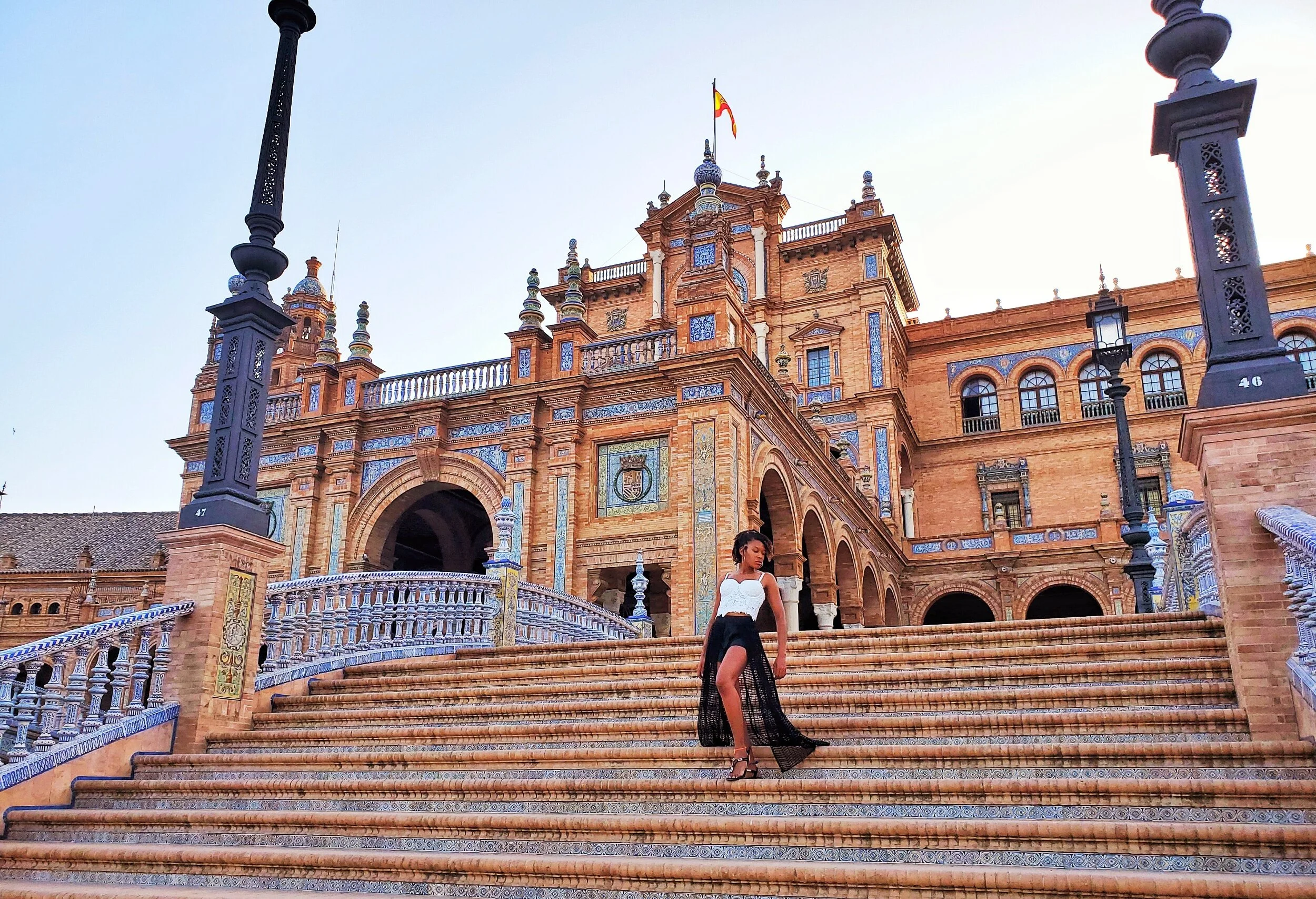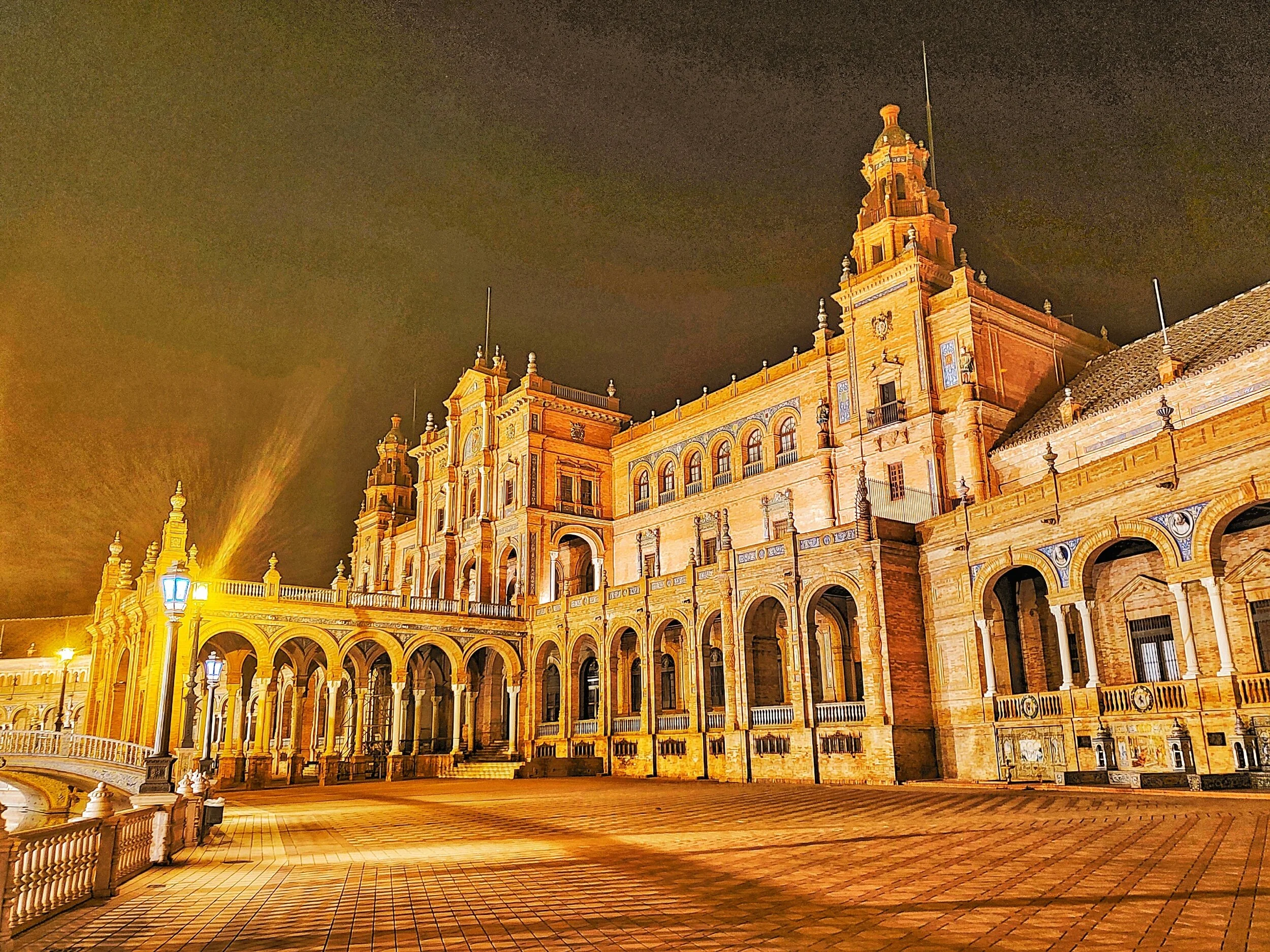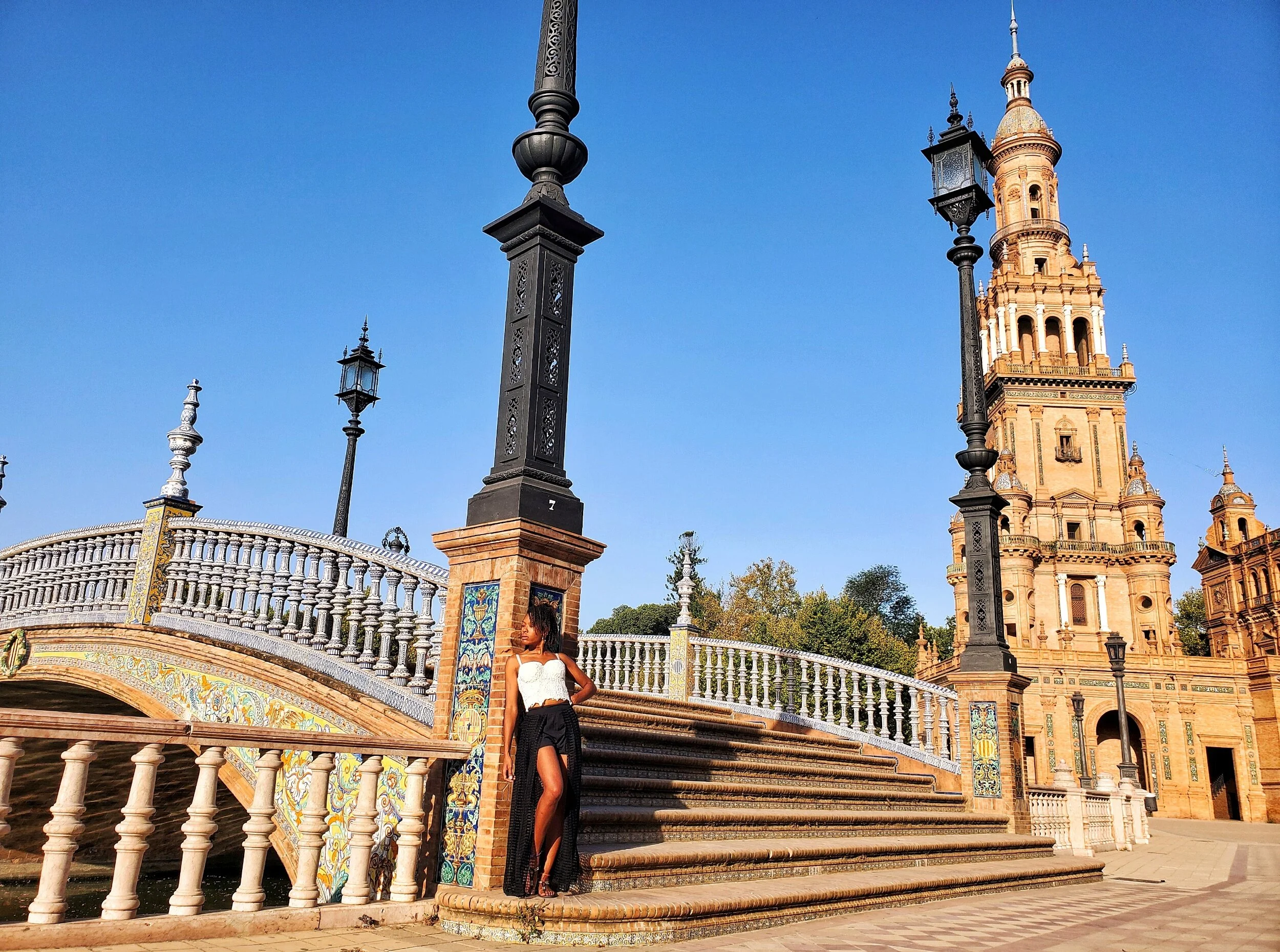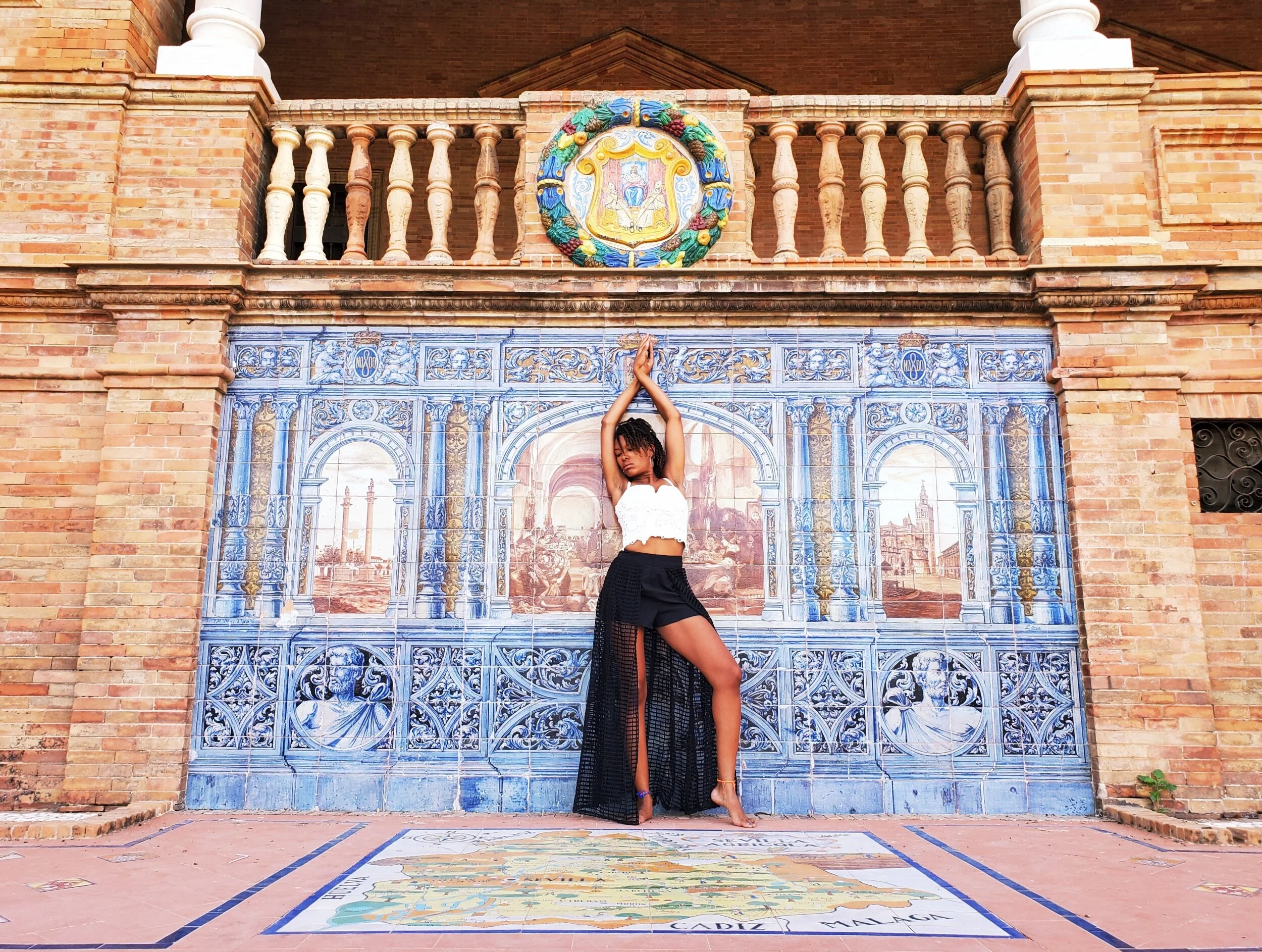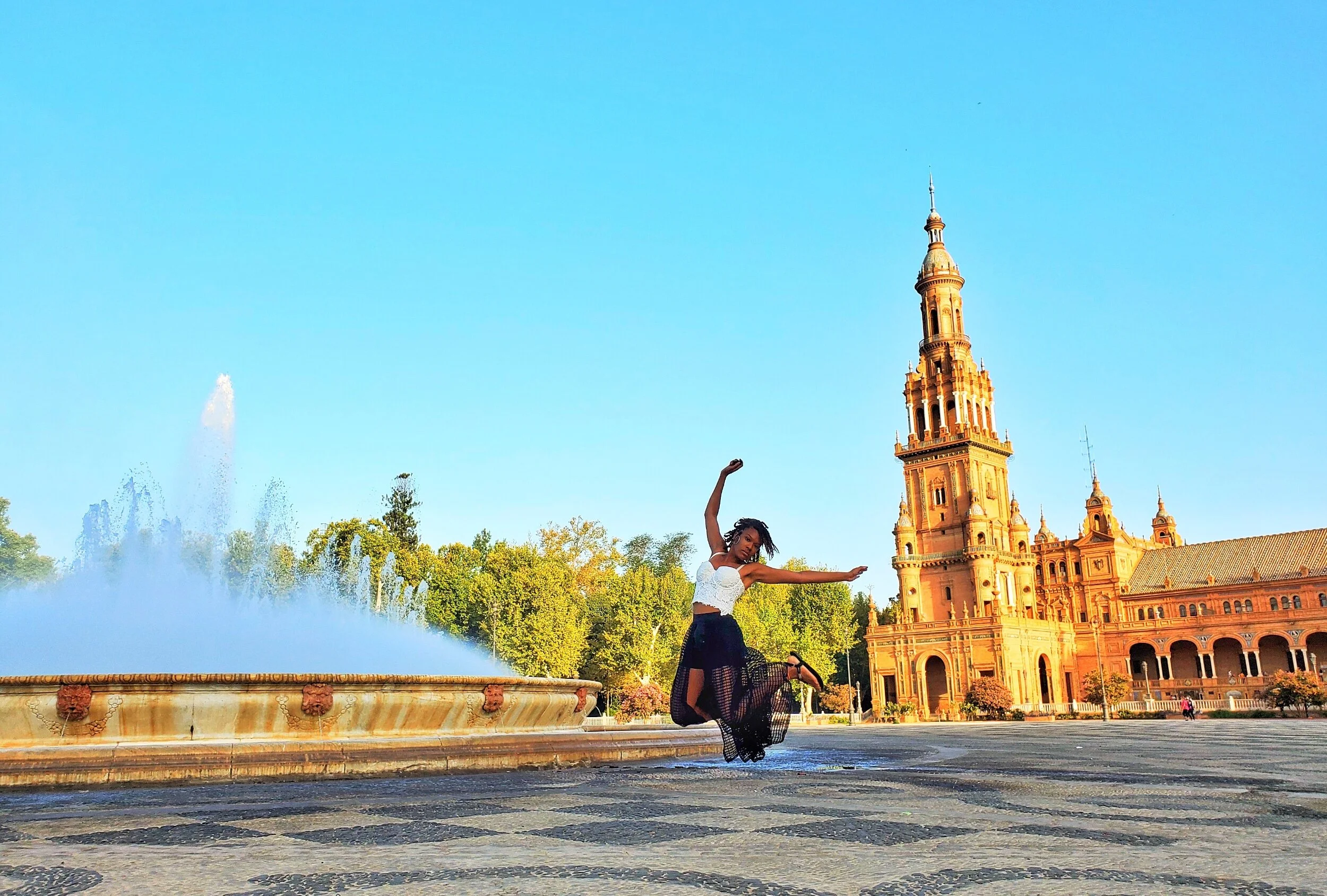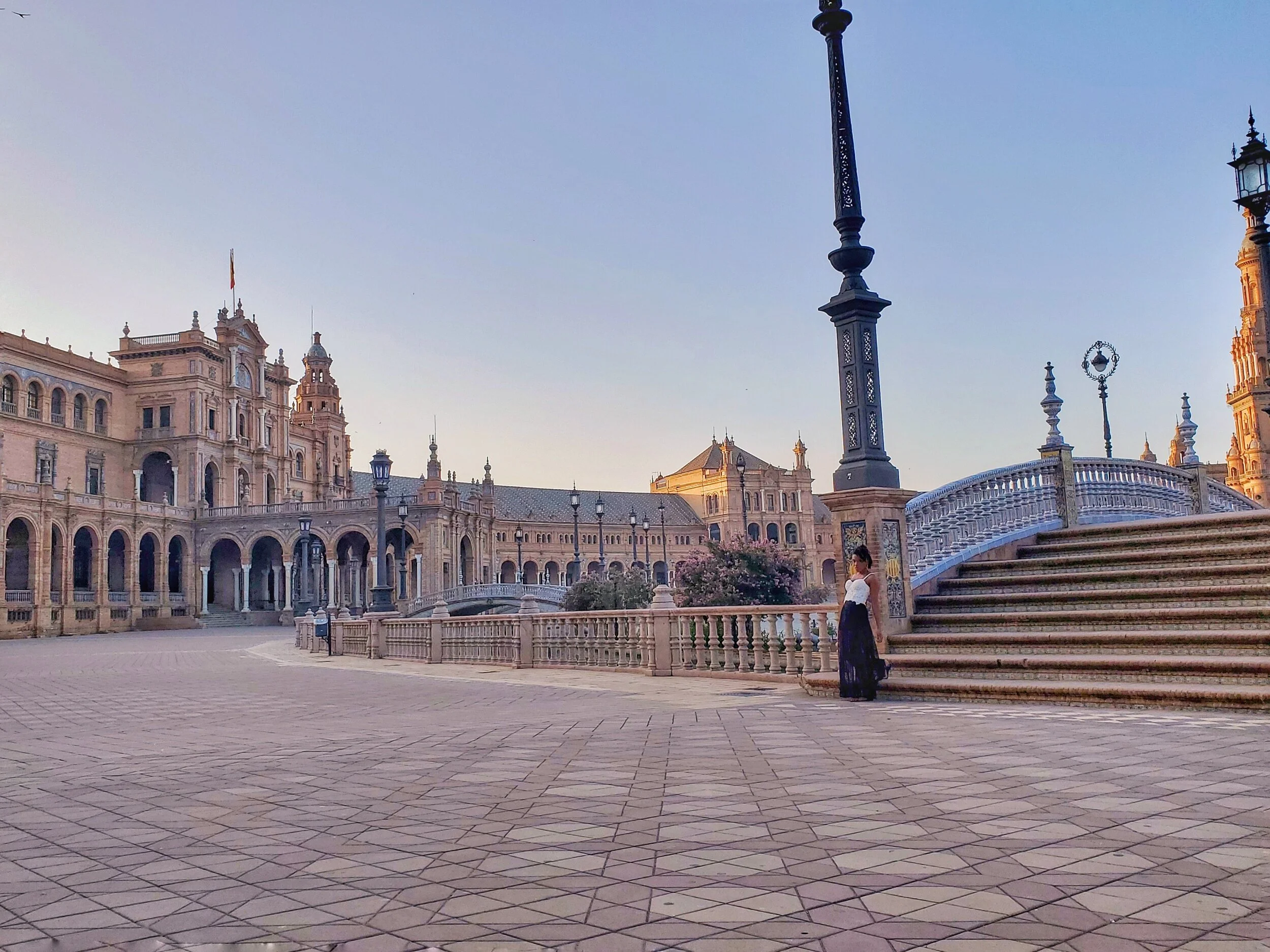If you’re seeking to travel to Seville and want to know where to find the most famous monuments, best restaurants, and which food to try, this guide has everything you need! From visiting the legendary, like the stunning Plaza de Espana, to taking in the eccentric, like a flamenco show at Casa Flamenco, there are many things to do in Seville. The Andalusian city has a history that is nearly as rich as its cuisine, so if you want to know more about the top attractions in Seville yet have limited time, look no further than below. Whether you’re searching for the best tapas bars or the most popular destinations, here's the ultimate 3-day Seville travel guide. ¡Vamanos!
The History
How to Get to Seville
Getting around Seville
Where to Stay in Seville
The 6 Best Local Tapas to Try in Seville
3-day Itinerary
Final Thoughts
The History
Seville is located in the southwest of Spain in the autonomous community of Andalusia, but its history stretches as far as the Roman Empire (if you’re interested in learning more, check out these fantastic tours). Situated to the left of the Guadalquivir River, Seville was once an Iberian town until it was conquered by the Romans in the 2nd century, who dubbed it Hispalis and under whose reign the budding city’s influence in the region continued to grow.
Hispalis would eventually become the seat of the Germanic Silingi Vandals kingdom in the early-5th century yet, by the mid-5th century, it would fall under Visigothic rule, who then renamed the city Spali. The Visigothic nobility would convert to Christianity by the late-5th century but the entire region would soon fall under Islamic rule upon the Moorish invasion of the Iberian peninsula in 711.
The city would then pass possession between warring caliphates for a few centuries but, during the over 700-year Muslim occupation, some of Seville’s most famous monuments were built, such as the Royal Alcazar in the mid-12th century and the Golden Tower in 1220.
It wouldn’t be until 1492 (right before Columbus sailed the ocean blue) that the Christian monarchs, Isabella I and Ferdinand II, would reclaim the Iberian peninsula (except for Portugal). From there, the rest is history as Seville would become a major port to the New World once the Americas were rediscovered, helping the Spanish crown line its pockets with Mayan gold while allowing Seville to blossom into Spain’s fourth-largest city, just 550 km (340 miles) southwest of the capital of Madrid.
*While I've had pleasure of visiting Seville a few times, I am notoriously terrible at taking pictures while traveling. On my last outing, I spent less than 24 hours in Seville but managed to get in a sunrise photo shoot at Plaza de España before catching my connecting flight from Cadiz to Santiago de Compostela. The shoot was sort of a passion project as Plaza de España is undoubtedly my favorite place in Spain!
**Check out my gallery of shots with the plaques representing every city that I've been to and or lived in in Spain (there's actually one for every province of Spain)!
How to Get to Seville
By Plane
Seville has an international airport that services many cities throughout Europe and also offers direct flights from the Spanish capital of Madrid. Seville is also well-connected to the rest of the Spanish Iberian peninsula via multiple modes of transportation. There’s a direct airport shuttle bus that travels between the airport and the city center nearly around the clock and takes only about 30-35 minutes.
Find the bus stop directly outside the airport’s “Arrivals” terminal and then purchase a round-trip ticket in cash once you board to save a few euros. In place of taking public transportation, you can also hail a taxi from the taxi stand outside the “Arrivals” terminal to spare yourself the hassle of using public transportation.
By Train or Bus
There is a regional and national train as well as several bus routes that run through the country nearly around the clock. Advanced booking is recommended as ticket prices tend to surge around local holidays, quickly selling out.
By Car
Hiring a car in Spain is very easy as many companies offer great deals on weekend rentals. The most common cars in Spain are manually-operated but you can find establishments that rent automatic cars, though you should expect this option to be much more expensive. Europcar, Enterprise, and Hertz are arguably the most reputable operators in the area so try to book a car from them in advance.
Getting around Seville
By Foot
Although Seville might be one of the biggest cities in Spain, getting around on foot is quite feasible as long as you don’t have limited mobility. The majority of the most famous landmarks in Seville are within walking distance of each other within the city center so you’ll never have to travel too far.
By Bus
For those who can’t take walking around in the brutal Andalusian summer heat (the temperature easily reaches around 40°C (104°F) or have limited mobility, several reliable bus lines run frequently through every major area in the city until about 11 PM but there are also night buses that run until 2 AM. Travelers in Seville would do best to stick to lines C1, C2, C3, and C4, all of which are circular routes that service the most popular neighborhoods. Find timetables for routes here.
By Taxi
You can also easily cab around the city by finding a taxi stand in front of any major plaza. Taking a taxi in Seville is fairly cheap as the region is known for its affordable prices compared to the north of the country. You should be able to get around any point in the city center for only a handful of euros and any fare pricier than that should be considered a rip-off.
By Bicycle
Biking is an excellent way to move around Seville that isn’t too expensive or time-consuming. If you’re feeling eco-conscient, you can probably rent a bike from your accommodation or one of the copious rental shops throughout the city center.
Alternatively, you can bike like a local by utilizing Seville’s Sevici service, a bike-share company with bike stands all around downtown Seville. Download their app to locate the stands and rent a bike at a fairer rate than in a typical bike shop as you can rent the bike hourly, daily, or weekly.
Where to Stay in Seville
Seville is filled with trendy neighborhoods to stay in from the sleek and elegant to the artsy and eclectic. Depending on what you’re seeking in a locale, some areas of the city might suit your tastes better than others. All the zones on this list are close to the city center to save you time on your commute to the most popular sites while exploring the city.
No matter if you prefer to stay in a colorful hostel or a luxurious boutique hotel, there are plenty of accommodation options throughout Seville’s city center in all manner of price range.
The Best Neighborhoods
SANTA CRUZ
This neighborhood is right in the heart of the city center, just a stone’s throw away from the most iconic monuments in Seville. Santa Cruz is a very popular location with tourists and, for that reason, boasts several cool bars that serve everything from tapas to sangria. Stay in Santa Cruz if you prefer not to have to commute between your accommodation and the best sights in Seville.
Best budget option: Oasis Backpackers Palace Hostel
Rooftop terrace, bar, and pool
Mixed and female dorms with AC
Private rooms with ensuite bathrooms and AC
Complimentary breakfast
Free walking tour
Best boutique hotel: Hotel Casa 1800 Sevilla
Rooftop terrace and pool
Private rooms with ensuite bathrooms and AC
Private parking
MACARENA
This neighborhood, located just north of Seville’s city center, has seen a major influx in change during its long history. Its past stretches back to as far as the Roman but the city has also witnessed the rise and fall of several empires, still sporting some of the relics of those ancient times.
Stay in Macarena if you want to feel the magical pull of those days of old, especially when you stumble upon Mercado de la Feria, Seville’s oldest market. Make sure to also check some remnants of the original city walls as well as the previous gateways into Seville, Puerta de Córdoba (to the east), and Puerta de la Macarena (to the west).
Best budget option: Hostal Jardin de la Alameda
Rooftop terrace and restaurant
Private rooms with ensuite bathrooms and AC
Best boutique hotel: Hotel Alcoba del Rey de Sevilla
Rooftop terrace with jacuzzi
Private rooms with ensuite bathrooms and AC
TRIANA
This neighborhood, situated, just across the Guadalquivir River from Seville’s city center, found its beginnings in Gypsy lore, as the area was once the nomad’s main hub. Triana has since had a resurgence in popularity with locals and travelers alike for its classic tapas bar and thrilling nightlife. Triana is probably the best place to stay for foodies, particularly if you want to be able to traipse from place to place, sampling the tastiest tapas in the city.
Best budget option: Hotel Zenit Sevilla
Rooftop terrace and bar
Private rooms with ensuite bathrooms and AC
Best boutique hotel: Hotel Ribera de Triana
Rooftop terrace, bar, and pool
Private rooms with ensuite bathrooms, river views, and AC
ARENAL
This posh neighborhood can be found just southwest of the city center and was named after the famous bullfighting stadium in the area. Once upon a time, it was also the main port that Spanish explorers used to set sail from and as well as to bring in goods from the New World. You can expect the streets to be brimming with classically-decorated buildings and the fanciest boutique shops as Arenal underwent a facelift during its modern renaissance. Catch a glimpse of the famed Torre del Oro (Golden Tower) or the Naval Museum of Seville, right across from the Guadalquivir River.
Best budget option: The Spot Central Hostel
Rooftop terrace and restaurant
Mixed and female-only dorms with AC
Private rooms with ensuite bathrooms and AC
Best boutique hotel: Hotel Mercer Sevilla
Rooftop terrace and pool
Private rooms with ensuite bathrooms and AC
DISTINTO SUR
Although Distinto Sur, situated to the very south of the city center, might be the furthest to get to on foot from downtown, it has some of the most beautiful places in Seville. Some of these lavish locations include the emblematic Plaza de Espana along with Parque Maria Luisa, just to its side. Plaza de España is renowned for its beauty due to its blend of Renaissance, Baroque, New Moorish architectural styles as well as its decorated, tiled alcoves, each representing a different Spanish province.
Still, it’s worth taking a walk through Parque Maria Luisa’s lush grounds as the locale also houses two important museums in Seville, the Museum of Arts and Traditions and the Archaeological Museum. Stay in Distinto Sur if you want to escape the crowds in the city center without having to sacrifice beautiful scenery and distinguished works of Sevillan art and culture.
Best budget option: Hotel Sevilla Center
Rooftop terrace and pool
Private rooms with ensuite bathrooms and AC
Best boutique hotel: Hotel Melia Sevilla
Rooftop terrace and pool
Private rooms with ensuite bathrooms and AC
The 6 Best Local Tapas to Try in Seville
There are so many delicious foods to try in Seville that a list of the best contenders can be hard to narrow down. Thankfully, that means that you won’t find a shortage of pinchos (tapas on slices of bread) or platos principales (main plates) to sample as you hop from tapas bar to tapas bar. Here are the six most traditional dishes in Seville that you absolutely can’t miss out on.
Vegan-friendly: 🍅
Vegetarian-friendly: 🍄
Pescatarian-friendly: 🍣
Contains gluten: 🍞
Contains dairy: 🍦
Contains alcohol: 🍺
Torrijas 🍞 🍦 🍄 🍣
If you must satisfy your sweet tooth first and foremost, then there’s no better dish to try than torrijas, a Sevilla remix on French toast. The sugary dessert is made of slices of toast dipped in beaten eggs and then deep-fried before finally being covered in either sugar syrup or sweetened milk. Have it after dinner as a dessert or try it for brunch.
Carrillada de cerdo 🍺
If you’re a fan of succulent meat, this dish is exactly what you’re looking for as long as you mind eating a little (really, a lot of) pork. The savory platter is made from pork slow-cooked in a reduced wine sauce until tender. Carrillada de cerdo is one of the most common foods in Sevillan cuisine, so you can expect to eventually stumble upon it in many tapas bars.
Cazón de adobo 🍣 🍞
Have you ever eaten a shark? Have you ever wanted to? For lovers of exotic food, especially of the seafood variety, cazón de adobo is a must-try, made from deep-fried dogfish (aka school shark). Seville is only an hour away from the coast and gets some of the freshest seafood in the region so don’t miss out.
Espinacas con garbanzos 🍅 🍄 🍣
This dish has been a staple in the Sevillan cuisine since the Moors ruled the area and is vegan-friendly to boot. Its name says it all as espinacas con garbanzos directly translates into spinach with chickpeas and the mixture is then blended with Moorish spices. Find this comestible in nearly any eatery as it's a local favorite in the tapas scene.
Serranito de lomo 🍞
When in Seville, there’s no more typical dish than serranito de lomo. This submarine sandwich may seem simple at first but it’s usually served on a fresh baguette stuffed with seared pork loin (or grilled chicken breast) and topped with thinly-sliced Serrano ham and accompanied by a side of fries and roasted green pepper. If you really want to eat like a local Sevillano, the serranito de lomo is certainly the dish to go for.
Solomillo al Whiskey 🍞🍺
Although the origins of Seville’s famous sauce have long been debated, the whiskey-based concoction has remained a local favorite. Brewed from whiskey, olive oil, and garlic, the sauce is then glazed over pork loin between two thick slices of warm bread. Could you find a better snack?
3-day Seville Itinerary
Seville is practically bursting with mesmerizing sights to see around every corner but if your time is limited, it can be difficult to fit everything into one trip. Instances such as these are where a streamlined itinerary is essential to maintaining your peace of mind while trying to tick the most iconic landmarks off your burgeoning bucket list.
Seek no further for such an itinerary as the one below has every popular monument in Seville (plus a bit of local trivia for my history buffs) set by neighborhood and distance so you don't waste your time running back and forth across the city. What's more, it also includes the best restaurants and cafes in Seville in case you need to make a pit stop to recharge. Let the adventure begin!
Day One
Hopefully, with any luck, you’ll arrive in Seville before noon and get to your accommodation without too much muss or fuss. After you’ve had a moment to settle in, get ready to visit all the most popular monuments in the heart of the city, including our first stop on your itinerary, the famous Cathedral of Seville.
What to see: Seville Cathedral
This 15th-century stands 105-m (344 ft) tall in the center of Seville’s old town and is usually the hottest ticket in town. Thus, make sure to snag tickets online well in advance to beat the crowd. Marvel at the cathedral’s external beauty and then head in to see the final resting place of Christopher Colombus. The rest of the city basically spreads out around the religious monument so feel free to take your time as your next destinations aren’t too far away.
Time to next destination: 1-minute walk
What to see: La Giralda
Exit Seville Cathedral and then head around the corner to spot La Giralda, the bell tower of Seville Cathedral built in the 13th-century during Moorish Spain. It was originally constructed as a part of the Great Mosque of Seville before that was converted into the current cathedral. Make sure to snap a picture of what was once the tallest tower in the world back in its day and then round the next corner to reach your next destination.
Time to next destination: 1-minute walk
What to see: General Archive of the Indies
More locally referred to as Archivo de Indias, this historical building is worth at least a fly-by to catch a glimpse of if you can swing it. It used to house the ancient merchants’ exchange of the city but now functions as an important repository of documents detailing the history of the Spanish Empire from the Americas to the Philippines. Book tickets online to visit or simply get an eyeful when you walk past the Archives to the next stop of the day.
Time to next destination: 1-minute walk
What to see: Puerta del Leon
Look out for this decorated archway known as the Puerta del Leon (Lion’s Door), an intriguing work of art that also doubles as the entrance to the Real Alcazar of Seville, one of the most breathtaking destinations in Seville.
Time to next destination: 1-minute walk
What to see: Royal Alcazar of Seville
The history of this royal palace dates back to the 8th century when Andalusia was under Moorish rule. The first fortified structure was erected in what would eventually become a massive residence fit for Islamic caliphs and Christian kings. During its nearly 500 years of construction, the Royal Alcazar (royal castle) has seen many expansions including the addition of grand halls, fantastical botanical gardens, and Moorish-style bathhouses. Get lost in the Murillo Gardens but make sure to keep an eye out for both the Catalina de Ribera fountain and the Christopher Colombus monument before leaving this wonderland.
Time to next destination: 6-minute walk
Where to eat: Ispal
You could probably grab a bite after all that walking around so hit up this Sevillan restaurant next. Ispal is famous for its tapas so there’s no better place to have your first taste of regional cuisine as the restaurant also offers lavish 10-to-15-course taste menus. Revel in the elegant decor while you get your fill of the tasty fare.
Time to next destination: 7-minute walk
What to see: Real Fabrica de Tabac of Seville
Swing passed this 18th-century building which used to function as Europe’s most significant tobacco factory and now houses the Chancellor’s Office of the University of Seville. Book tickets online for a guided tour of the building and to learn more about the important impact the tobacco industry had in Spain.
Time to next destination: 6-minute walk
What to see: Parque Prado de San Sebastián
This charming city park is built on the former site of the hermitage of San Sebastian. Check out the Fuente de Cuatro Estaciones (Four Seasons fountain). This small park shouldn’t take too long to explore, which is for the better as the best is yet to come just a few feet away.
Time to next destination: 7-minute walk
What to see: Plaza de España
This public square is one of the most popular destinations in Seville and features a mix of Baroque, Mudejar, and Renaissance architecture. The square was built for the Ibero-American Exposition of 1929. Arrive at the plaza for sunset and rent about to take you around its serene moat.
Time to next destination: 17-minute walk
Where to eat: Casa de Flamenco
When in Andalusia, you must do as the Andalusians do so why not take in a flamenco show? Casa de Flamenco is one of the most famous institutions for flamenco-style dance in Seville and provides dinner with a show for those who want a feast for their eyes, ears, and taste buds. You’ll be sure to be clapping along to the music by the end, too.
Total walking time: 53 minutes
Day Two
If you planned correctly, you were able to hopefully tick every destination off of your list from the day before, leaving you free to venture further out than Seville’s more overly-crowded tourist destinations. There are so many sights bursting with beauty that are hidden just a stone’s throw away from the city center if you’re feeling bold enough to explore. So what are you waiting for? The tick is already ticking and you don’t want to miss out, especially if you’re in the mood for churros…
Where to eat: Cafeteria Doña Carmen
Start your day off right by heading to this quaint cafe renowned for serving piping-hot churros every day starting at 7:30 AM until noon. Expect to be surrounded by flocks of locals pandering to the servers for hot chocolate and churros so squeeze in where you can to begin the day with a bang.
Time to next destination: 5-minute walk
What to see: Museum of Fine Arts of Seville
This elegant museum was founded in the 19th century but the building itself dates back to the 16 century. Reserve tickets online to skip the line and fast-track your way to one of the best collections of Spanish visual arts from the Middle Ages to the 20 century.
Time to next destination: 9-minute walk
Where to eat: Espacio Eslava
Wandering around the Museum of Fine Arts might have helped you work up your appetite so head over to the Espacio Eslava for an afternoon snack. This locale is well-known for its extensive tapas menu so regardless of what you order, you can’t go wrong.
Time to next destination: 5-minute walk
What to see: Alameda de Hercules
Come across this promenade on your way to your next destination, which was originally constructed in the 16 century as the oldest public park in Spain and Europe. Its name, Alameda, comes from the eight rows of alamos (white poplar trees) filling the park. Take a picture with the twin columns of the Lions of the Northern Side before continuing on.
Time to next destination: 1-minute walk
Where to eat: Freskura
Depending on the time of year you’ve decided to travel to Seville, it’s either going to experience temperate weather, like in fall or winter, or be a sweltering hot inferno, like the rest of the year. Regardless of the weather forecast, you might be feeling peckish and what better to slake your sweet tooth than some ice cream? Freskura is an Italian gelato spot that serves the best soft-serve in town so get a scoop while you can.
Time to next destination: 5-minute walk
What to see: Las Setas de Sevilla
This eye-popping monument goes by many names depending on who you ask. Whether you call it Metropol Parasol or the Mushrooms of the Incarnation, Las Setas was designed by architect Jurgen Mayer and constructed from wood, standing 26-m (85-ft) tall. Take one of its two elevators up to its viewpoint to get a terrific panoramic view of the city from above.
Time to next destination: 9-minute walk
Where to eat: El Rinconcillo
Considered Seville's oldest tapas bar, El Rinconcillo has been a local staple since 1679 and certainly isn’t to be missed out on. Revel in the Sevillan decor, from the Arabic-style tiling to the swinging rack of Iberian ham hanging over the bar. Eat standing up at the bar like a true local or ask for a table upstairs to get away from the crowd. Either way, you won’t be disappointed by the food.
Total walking time: 37 minutes
Day Three
If you only have so much time left on your final day in Seville, or can only afford to spend a half-day exploring, then these last few sites shouldn’t take too long to tick off your bucket list. There’s always more to see for those not-in-a-rush, too.
What to see: Seville Town Hall
For fans of Plateresque-style architecture, the Ayuntamiento de Sevilla should be a particularly special treat. The building was constructed between the 16th to 19th centuries and used to function as a San Francisco monastery. Stroll by the town hall on your way to the next pitstop for brunch.
Time to next destination: 4-minute walk
Where to eat: Mamarracha
Grab a pick-me-up or brunch at Mamarracha, famous for its chic decor complete with a vertical garden wall and tasty international cuisine. Expect your food to be cooked over an open fire for an authentic taste of the Spanish south. Then, walk off your post-meal lethargy by taking a leisurely jaunt to the last site on this itinerary yet it's certainly not the least.
Time to next destination: 20-minute walk
What to see: Parque de Maria Luisa
This mesmerizing huge park is toward the south of the city and a bit of a walk from the city center (about 20 minutes to be exact). Still, the 40-acre wonderland, which was inaugurated in 1941, is certainly worth venturing to as it boasts a rich history, as it was built around what was once the palacio de San Telmo, constructed at the behest of La Infanta Maria Luisa Fernanda de Borbón and her consort, the duke of Montpensier in 1850. The park is also now home to two of Seville’s most important museums:
Museum of Arts and Traditions
Archaeological Museum
Take a quick walk across its vast grounds in case you don’t have to explore at your own pace. If you have the opportunity, however, check out its museums or spend the day counting how many fountains you’ve stumbled upon. Hopefully, all that moseying around will work up your appetite for our final destination.
Time to next destination: 20-minute walk
Where to eat: San Marco - Santa Cruz
If you’re looking for romance in Seville, there’s no more appropriate place than San Marco - Santa Cruz where candlelit dinners are guaranteed. The 30-year old Italian restaurant’s charm also comes from the fact it’s situated in former Arabic baths which makes the locale even more intimate. Come for the vibe and stay for the authentic cuisine just like your Italian grandmother used to make.
Time to next destination: 14-minute walk
What to see: Torre del Oro
The tower was built as a military installation in the 13th century during the reign of the Almoravids to protect against the invading troops of the Castillan kings, Alfonso VI and Alfonso VII. Now the gorgeous tower rests as a testament to the former rulers of the land.
Total walking time: 58 minutes
Final Thoughts
No matter if you’re heading to Seville to get some of that sumptuous Spanish sun or to get your fill of flamenco flair, you’ll have all your bases covered with this ultimate itinerary. Enjoy the best tapas that Seville has to offer and then walk off the tasty morsels by moseying between monuments, each more marvelous than the last.
If you're planning on staying in the city a bit longer, why not try to get in some shopping? You can leisurely stroll down either Calle de Luis Montoto or Calle de Luis de Morales, which are both packed with boutique and artesian shops that are bound to have a trinket or two for you to take home.
You can also try an experience with a local such as a traditional-style cooking class, a bike tour of the best monuments in Seville, flamenco lessons or even a paddleboarding course that leads you down the famed Puente de San Telmo.
What more could you need in an Andalusian holiday?
May you get lost in wonder,
M

